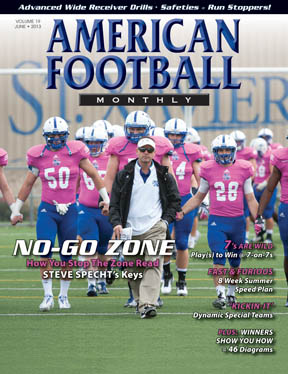Article CategoriesAFM Magazine
|
Develop Your Dynamic Identityby: Gavin FittsSpecial Teams Coordinator, Framingham State University © More from this issue Every experienced coach knows that teams tend to develop a particular identity during the course of the season. Some coaches argue that the best teams are the ones that have the flashiest, most dominating identities – teams like the Oregon Ducks, known for its high-octane offense, or the Baltimore Ravens, known for its suffocating defense. Other coaches counter that the best teams are often the ones that possess less exciting identities, those summarized with phrases like “balanced” or “disciplined” – teams like the New York Giants or the University of Alabama. In either case, at some point in the season, successful teams forge an identity. Furthermore, the most successful teams have players that buy into those identities. With few exceptions, team “identities” focus on either offense or defense. The special t....The full article can only be seen by subscribers.
|
|
|||||||
| HOME |
MAGAZINE |
SUBSCRIBE | ONLINE COLUMNISTS | COACHING VIDEOS |
Copyright 2025, AmericanFootballMonthly.com
All Rights Reserved





